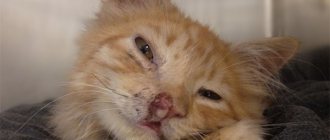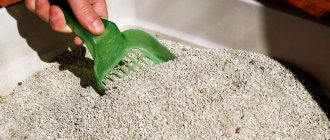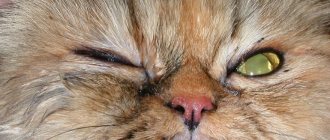Let's figure out what this document is and how to make a passport for a cat so that it is impossible to find fault with it. Mostly, animal owners try to apply for it when they are going to travel abroad. And it is right. Many states will not allow a cat to cross the border without the appropriate documents.
Therefore, a veterinary passport is a document that contains information about the cat and its owner.
The veterinary passport must contain all data about the cat.
However, it contains information that is necessary not only for people traveling abroad with their pets, but also for those who intend to protect their loved ones and their pets from diseases.
Firstly, the passport must indicate information about:
- vaccination of the cat (with the date of vaccination, name, serial number, name of the doctor);
- treatment or prevention of parasites in cats (with the date, name of the drug and its dose);
- flea and tick treatment (with date of treatment, name of medication and dose);
- surgical operations, if any (when and by whom the operation was performed, its name);
- reproductive ability of the cat (with a full indication of the date of estrus, mating, birth and the number of kittens that were born);
- diagnostics;
- the presence of a chip (with the date of implantation, its number and the place of insertion into the cat’s body).
Information about the owner must also be written down in the veterinary passport.
The veterinary passport also has a pasted-in photo of the pet, its name, date of birth, what breed it belongs to, its color, type of coat, and gender are written down.
Information about the owner must also be recorded (his full name and residential address, as well as information about the doctor and veterinary clinic where the animal was registered).
Microchipping a cat
A good method that will prove that the cat is yours and no one else’s is microchipping. To do this, an electronic chip or simply a carrier is sewn under your pet’s skin. However, this technique is mainly used by owners of purebred animal species. This is a kind of electronic passport, which can be used to restore all data if suddenly the paper form is lost or something happens to it.
Mostly owners of purebred animal species resort to microchipping.
But keep in mind that chipping itself is an expensive pleasure and not everyone can afford it. Typically, the cost of such a procedure ranges from 600 to 1500 rubles.
Document appearance
In Russia, a veterinary passport for a cat does not have one set form and can be different. The basis here is not the appearance, but its internal content. However, there is an exception in certain regions of the country. For example, in St. Petersburg, strict veterinary rules have been established. The passport you can make there will look exactly like this:
In Russia, a veterinary passport for a cat does not have one set form and can be different.
Keep in mind that it will be difficult to get abroad with this document, since there is no place for a photograph of the pet, and the columns are printed only in Russian and English. This is a very serious reason to refuse your travel abroad.
Before you get a passport for your cat, thoroughly study all the rules for exporting an animal, as well as the region in which you will be drawing up the document.
Why drops?
Veterinary pharmacies offer a wide range of products designed to protect pets from fleas. They are available in the form of sprays, aerosols, shampoos and collars soaked in a special solution.
Despite this variety, veterinarians advise using drops. This form of insecticide is considered the most convenient and effective, since the drops are able to penetrate the skin of the animal and effectively protect it from parasites.
When using sprays, the composition is sprayed onto several sentiments around. At the same time, it can get into those areas that the animal will lick, which can provoke poisoning.
Licks himself
Flea collars also have disadvantages:
- if worn incorrectly, it may rub your neck;
- while wearing it, if the collar gets caught, the pet may be injured;
- not every animal will wear a protective attribute.
As for the drops, their use will not cause discomfort to the pet. In addition, the owner can easily apply the drug to the pet’s withers without fear that the animal will lick the composition.
How to make a veterinary passport?
So how to make a veterinary passport for a cat? This question is very important for those who are going to visit other countries or prefer to travel within their own country. This also affects those owners for whom the health of their cats comes first. After all, having a veterinary passport is like having a medical card for a person. Therefore, we will tell you how to get a passport for a cat and where to apply.
The pages of the passport must be stamped by the veterinary clinic.
Attention! The passport is issued at the veterinary clinic during the first vaccination.
It is filled out by the clinic doctor. The pages of the document must be affixed with the stamps of the veterinary clinic, and in places where the mark on the vaccination performed is indicated, there must be a doctor's stamp and signature, otherwise they will be invalid.
The document is needed in order to register the animal for export abroad. Keep in mind that the doctor's signature and stamp will be valid for about 5 days. These periods do not include the departure of the owner with the cat. You will then have to make new entries abroad if your departure takes longer than the specified days.
A passport is needed to register an animal for export abroad.
International veterinary passport for cats
It is also possible to obtain an international veterinary passport for a cat. The difference between this passport and a regular one is that the information in the document is repeated in German or English.
Attention! Currently, clinics prefer to immediately issue an international passport - this will save them time and money for the customer.
This is a pretty good proposal that will solve several problems. The owner only needs to present this document at the border. And the question of how to get a passport for a cat, and then prepare other documents, will disappear on its own.
However, there are quite a lot of companies in Russia that make European passports for cats. This document supposedly allows the owner to travel with his pet throughout the EU countries without issuing other certificates. In fact, it is no different from an international passport, but the cost will be much more expensive. Only you can decide in this situation!
How much does registration cost?
The following factors influence how much a veterinary passport for a cat costs:
- conditions for registration: calling a veterinarian at home or visiting a clinic (private or public);
- urgency of production;
- carried out to complete the procedure.
The form itself can be purchased at almost any pet store or veterinary clinic at a price ranging from 35-100 rubles. In fact, the cost of obtaining a veterinary passport will correspond to the cost of vaccinating your pet, but if you need to issue an urgent option, this figure can increase significantly.
How to make a cat passport about the breed
You can learn how to get a cat's breed passport from this article. If you want your cat to take part in cat shows, then you need to have:
- veterinary passport (with a note about checking for worms no later than in the last 3 months);
- cat's pedigree;
- a certificate that can be obtained only before the exhibition.
When a cat is born, she is given a document called a birth certificate.
If the cat is without any breed, then it also has the right to take part in the exhibition as a domestic cat. In this case, a certificate stating that it belongs to purebred cats is not required.
It is not easy to make a pedigree for a cat. If you lose it, you can contact the club. They will certainly help you there.
When a cat is born, she is given a document called a metric, and based on it, a pedigree can be drawn up for the cat. The metric provides complete information about the breed and parents of the cat. A pedigree can only be made if you have the kitten's metric on hand.
When the kitten is 6 months old, you need to contact the club where the mother cat was registered
To complete it you need to do the following:
- when the kitten turns 6 months old, you need to contact the club where the mother cat was registered;
- the club checks the entire pedigree to meet accepted standards (only then does it pass).
The document will also set out:
- the name and emblem of the club;
- club address and telephone numbers where you can contact them;
- number;
- information about her nickname;
- information about color and breed;
- gender of the animal;
- information about the mother and her ancestors;
- mother's achievements, her titles;
- information about the father;
- date of issue of the document.
The procedure for registering a pedigree should be carried out when the animal is 1 year old.
Registration of an already adult cat occurs somewhat differently. The pet is simply taken for examination and there it is revealed or denied that it belongs to the breed. The only thing is that there will be a dash in the column about the cat’s parents, since their origin will be unknown. In this case, the pet will be the founder of the breed, and such a cat will be allowed for breeding as an experimental species.
Attention! The registration procedure must be carried out when the animal turns 1 year old, otherwise later registration will be more difficult and time-consuming.
You can see an example of a pedigree below.
An example of a cat's pedigree
It is possible to obtain a certificate of conformity to the breed. First, the cat's breed must be noted by the commission. Next, you need to participate in at least 3 exhibitions with a positive assessment from experts that it meets all standards. After all this, you need to find a purebred cat and create joint offspring. As a result, the kittens will have a partial pedigree, and their children will receive a full pedigree.
Metrica\kitten slip (“kitty”)
This is the kitten’s birth certificate, which is issued upon its activation in the club/system. The metric indicates the kitten's name, its breed, gender, color, date of birth; names and colors of the kitten's parents; name of the breeder, etc. The document must have the emblem of the system to which the kitten belongs.
Also, the metric of the European system must bear the seal of the club that issued it, and the signature of the responsible club functionary who activated the kittens, so that in the future it can be exchanged for a pedigree.
In American systems, based on the metric (slip), a kitten is registered and a pedigree is ordered at the central office.
A European breeder may refuse to give kittens for castration, but he is obliged to at least show it to you. And it’s better to ask her to give her back, the club still knows that the kitten is for castration and will not give you the pedigree just like that.
In American systems, such problems do not arise, since all breeding restrictions are indicated when registering a litter.
What is needed to transport an animal abroad?
In addition to having an international veterinary passport and electronic identification, you must have:
- Form 1 BET. The certificate is issued by a veterinary clinic, but not earlier than 3 days before the animal travels abroad.
- A certificate stating that the animal does not have rabies.
- Import Certificate. Filled out by a veterinarian with his signature and seal.
- Container for transporting animals abroad.
To transport an animal abroad, you need a special container.
If you are wondering how to get a passport for a cat, be it a veterinary passport, pedigree or an international passport, be prepared for the fact that you will have to work hard to get them. But, as they say, nothing is impossible!











